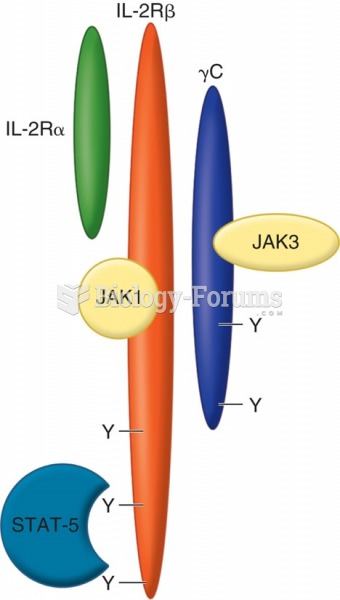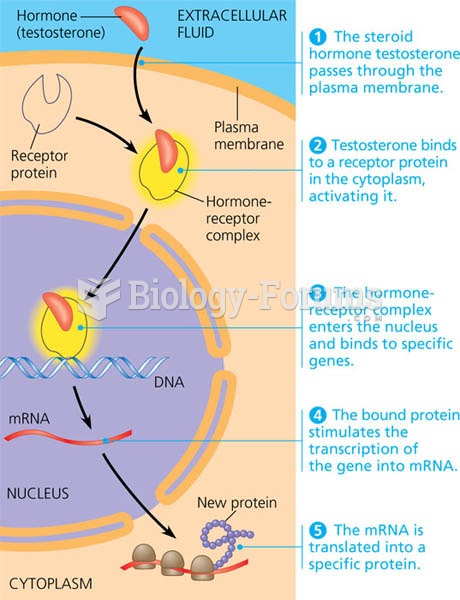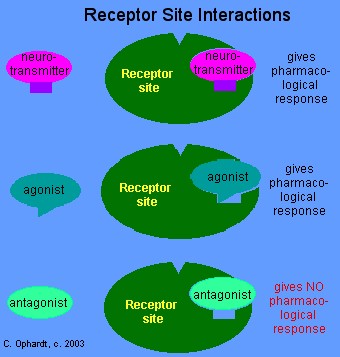Definition for Mu Opioid receptor
From Biology Forums Dictionary
The μ-opioid receptors (MOR) are a class of opioid receptors with high affinity for enkephalins and beta-endorphin but low affinity for dynorphins. They are also referred to as μ opioid peptide (MOP) receptors. The prototypical μ receptor agonist is the opium alkaloid morphine; μ (mu) refers to morphine.
Contents
[hide]Types
Three variants of the μ opioid receptor are well-characterized, though reverse-transcriptase PCR has identified up to 10 total splice variants in humans.
μ1: More is known about the μ1 opioid receptor than is known about the other types.
μ2: TRIMU 5 is a selective agonist of the μ2 receptor.
μ3: In 2003, a μ3 variant was described, which was responsive to opiate alkaloids but not opioid peptides.
Location
They can exist either presynaptically or postsynaptically depending upon cell types.
The μ-receptors exist mostly presynaptically in the periaqueductal gray region, and in the superficial dorsal horn of the spinal cord (specifically the substantia gelatinosa of Rolando). Other areas where μ-receptors have been located include the external plexiform layer of the olfactory bulb, the nucleus accumbens, in several layers of the cerebral cortex and in some of the nuclei of the amygdala, as well as the nucleus of the solitary tract.
μ receptors are also found in the intestinal tract. This causes constipation, a major side effect of μ agonists, due to inhibition of peristaltic action.
Activation
MOR can mediate acute changes in neuronal excitability via "disinhibition" of presynaptic release of GABA. Activation of the MOR leads to different effects on dendritic spines depending upon the agonist, and may be an example of functional selectivity at the μ receptor. The physiological and pathological roles of these two distinct mechanisms remain to be clarified. Perhaps, both might be involved in opioid addiction and opioid-induced deficits in cognition.
Activation of the μ receptor by an agonist such as morphine causes analgesia, sedation, slightly reduced blood pressure, itching, nausea, euphoria, decreased respiration, miosis (constricted pupils) and decreased bowel motility often leading to constipation. Some of these side effects, such as sedation, euphoria and decreased respiration, tend to lessen with continued use as tolerance develops. Analgesia, miosis and reduced bowel motility tend to persist; little tolerance develops to these effects.
The canonical MOR1 isoform is responsible for morphine-induced analgesia whereas the alternatively spliced MOR1D isoform (through heterodimerization with the gastrin-releasing peptide receptor) is required for morphine-induced itching.
Deactivation
As with other G protein-coupled receptors, signalling by the mu opioid receptor is terminated through several different mechanisms, which are upregulated with chronic use, leading to rapid tachyphylaxis.[9] The most important regulatory proteins for the mu opioid receptor are the β-arrestins Arrestin beta 1 and Arrestin beta 2, and the RGS proteins RGS4, RGS9-2, RGS14 and RGSZ2.
Long-term or high dose use of opioids may also lead to additional mechanisms of tolerance becoming involved. This includes downregulation of mu opioid receptor gene expression, so the number of receptors presented on the cell surface is actually reduced, as opposed to the more short-term desensitisation induced by β-arrestins or RGS proteins. Another long-term adaptation to opioid use can be upregulation of glutamate and other pathways in the brain which can exert an opioid-opposing effect and so reduce the effects of opioid drugs by altering downstream pathways, regardless of mu opioid receptor activation



